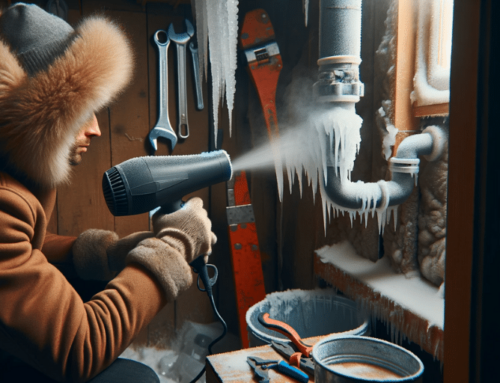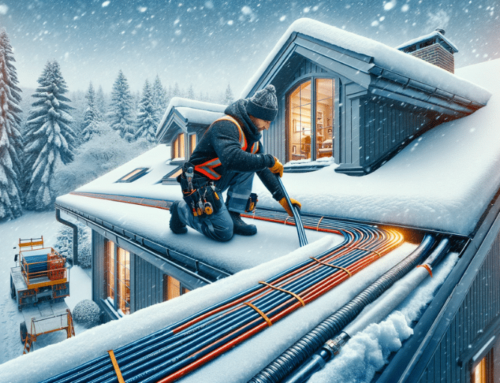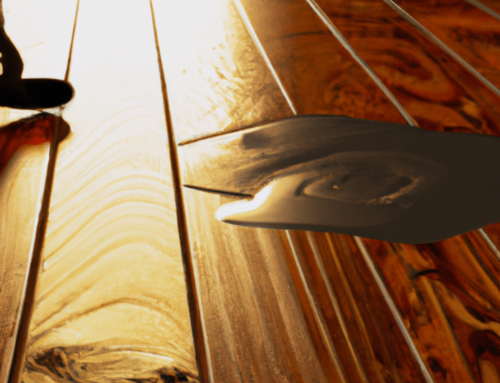How to Repair Water Damaged Ceiling Plaster?

Water damage to a ceiling can be a frustrating and unsightly problem. Whether it’s caused by a leaky roof, burst pipe, or overflowing bathtub, addressing the issue promptly is crucial to prevent further deterioration. In this guide, we’ll take you through the step-by-step process of repairing water-damaged ceiling plaster, restoring your ceiling to its former glory.
Identifying the Extent of the Damage
Spotting signs of water damage
When it comes to repairing water damaged ceiling plaster, the first step is to identify the extent of the damage. Look out for signs such as discoloration, sagging, peeling paint, and visible water stains on the ceiling. These are all indicators that there may be water damage. It’s important to catch these signs early on to prevent further damage and ensure a successful repair.
Examining the source of the leak
Once you’ve spotted signs of water damage, it’s crucial to determine the source of the leak. This could be a leaking pipe, a roof leak, or even condensation buildup. Look for any visible signs of water intrusion, such as wet spots or dripping water. It’s essential to address the source of the leak before proceeding with the repair to avoid future damage.
Evaluating the severity of the damage
After identifying the signs of water damage and pinpointing the source of the leak, it’s time to evaluate the severity of the damage. Is it a minor issue that can be fixed with a simple repair, or is it a more extensive problem that may require professional help? Assessing the severity of the damage will help you determine the best course of action and whether you can handle the repair yourself or if you need to seek professional assistance.
Safety Precautions
Wearing proper safety gear
Before starting any repair work, it’s crucial to prioritize safety. Wear appropriate safety gear, including goggles, gloves, and a dust mask. This will protect you from potential harm such as falling debris, dust, or mold spores that might be present during the repair process.
Ensuring the area is dry and safe to work on
Before you begin repairing the water damaged ceiling plaster, it’s essential to make sure that the area is dry and safe to work on. Ensure that all water sources have been stopped and that the ceiling has dried completely. Working on a wet surface can lead to further damage and compromise the integrity of the repair.
Handling electrical fixtures
If your repair work involves electrical fixtures, it’s crucial to turn off the power supply to the affected area before starting any repairs. This will prevent any potential accidents or electrocution. If you’re unsure about handling electrical fixtures, it’s best to consult a professional electrician to ensure your safety.
Gathering Necessary Tools and Materials
Creating a list of needed repair items
Before you can begin the repair process, it’s important to gather all the necessary tools and materials. Make a comprehensive list of items you’ll need, such as plaster, paint, sandpaper, a putty knife, a ladder, and any other tools specific to your repair project. Having everything on hand will make the repair process more convenient and efficient.
Choosing the right type of plaster
Selecting the right type of plaster is crucial to ensure a successful repair. There are various types of plaster available, such as setting-type plaster and ready-mixed plaster. Consider factors such as the severity of the damage and the drying time required when choosing the appropriate plaster for your repair project.
Selecting suitable tools
Having the right tools for the job is essential for a smooth and effective repair process. Tools such as a putty knife, a sanding block, a ladder, and a paintbrush are commonly used when repairing water damaged ceiling plaster. Ensure that your tools are in good condition and suitable for the task at hand.
Stopping the Source of the Leak
Locating the source of the water damage
Once you’ve gathered all the necessary tools and materials, it’s time to locate the source of the water damage. This may require some investigation, especially if the source is not immediately obvious. Check for signs of water intrusion, such as damp spots or discoloration, and trace it back to its origin. Once you’ve identified the source, take appropriate measures to stop the leak and prevent further damage.
Effective temporary solutions
While you work on a permanent fix, it’s important to implement effective temporary solutions to prevent further water damage. This could involve using buckets or tarps to catch any water that may still be leaking. It’s crucial to remember that these are temporary measures and should not replace a permanent fix.
Possible long-term fixes
Once you have successfully stopped the source of the leak and implemented temporary solutions, it’s time to consider the long-term fixes for the water damage. This may involve fixing a leaking pipe, repairing a damaged roof, or improving ventilation to prevent condensation buildup. Consulting with professionals in the respective fields will ensure a lasting solution to prevent future water damage.
Removing the Damaged Plaster
Using the right technique to remove damaged plaster
Before you can start repairing the water damaged ceiling plaster, you’ll need to remove the damaged portions. To do this, use a putty knife or a scraper to gently pry away the loose or damaged plaster. Take care not to damage the surrounding areas, as this can hinder the repair process.
Preventing further damage
During the removal process, it’s essential to be cautious and prevent further damage. Avoid applying excessive force, as this can cause the surrounding plaster to crack or break. Take your time and work slowly to ensure a clean removal without causing additional harm.
Cleaning the area after the removal
Once you’ve removed the damaged plaster, it’s crucial to clean the area thoroughly. Use a soft brush or a vacuum cleaner to remove any dust, debris, or loose particles. This will ensure a clean surface for the next steps of the repair process.
Applying Replacement Plaster
Mixing plaster
Before applying the replacement plaster, you’ll need to mix it according to the manufacturer’s instructions. Follow the recommended mixing ratios and use a clean bucket and mixing paddle to achieve a smooth consistency. Mixing the plaster properly will ensure a strong and durable repair.
Application techniques for smooth finish
When applying the replacement plaster, it’s important to use proper application techniques to achieve a smooth finish. Start by applying a thin layer of plaster using a putty knife or a trowel and gently spread it over the damaged area. Feather the edges to ensure a seamless transition between the repaired area and the surrounding plaster. Allow each layer to dry before applying subsequent coats, if necessary.
Allowing adequate drying times
Once you have applied the replacement plaster, it’s crucial to allow it adequate drying time. Follow the manufacturer’s instructions for the recommended drying time before proceeding to the next step. Rushing the drying process can compromise the quality of the repair and lead to future problems.
Sanding and Finishing
Choosing the correct sandpaper grit
Before sanding the repaired area, it’s important to select the correct sandpaper grit. The grit size will depend on the smoothness of the repair and the level of imperfections that need to be addressed. Start with a coarser grit, such as 120, to remove any high spots or rough edges. Then progress to a finer grit, such as 220, to achieve a smooth and even finish.
Techniques for smooth sanding
When sanding the repaired area, use smooth and even strokes to avoid creating additional imperfections. Sand in circular motions or back and forth, depending on the size of the repair area. Take your time and periodically check the smoothness of the surface to ensure a seamless finish.
Addressing imperfections in the finish
After sanding, inspect the repaired area closely for any remaining imperfections. Use a putty knife or a scraper to fill in any small divots or uneven areas with additional plaster. Once the repairs have dried, sand the patched areas gently to achieve a smooth and uniform finish.
Painting over the Repaired Area
Choosing the right type of paint
Before painting over the repaired area, it’s important to choose the right type of paint. Opt for a high-quality latex paint that is specifically formulated for ceilings. Consider the color and finish you desire and ensure that the paint is compatible with the plaster and any underlying primers or sealers you may have used.
Painting techniques for a seamless look
When painting over the repaired area, use smooth and even brush strokes or a roller for larger areas. Start from the edges and work your way towards the center to ensure a seamless transition with the surrounding ceiling. Apply two to three thin coats, allowing each coat to dry completely before applying the next.
Allowing adequate drying time
After painting, it’s crucial to allow the paint adequate drying time. Follow the manufacturer’s instructions for the recommended drying time before handling or applying any further coats. Rushing the drying process can lead to paint smudges or damage to the repaired area.
Preventing Future Water Damage
Proper roof and plumbing maintenance
To prevent future water damage to your ceiling plaster, it’s important to prioritize proper roof and plumbing maintenance. Regularly inspect your roof for any signs of damage or leaks and address them promptly. Similarly, ensure that your plumbing system is in good condition and free from any leaks or potential sources of water damage.
Regular inspection for potential water sources
In addition to regular maintenance, it’s essential to regularly inspect your home for potential water sources that could lead to ceiling damage. Check for any dripping pipes, leaky faucets, or condensation buildup. Addressing these issues early on can prevent extensive water damage and the need for costly repairs.
The importance of quality materials to prevent damage
When it comes to preventing future water damage, using quality materials is crucial. Invest in high-quality paint, plaster, sealers, and other repair materials that are specifically designed to withstand moisture. Cutting corners and using inferior materials may save you money in the short term but can lead to more significant damage and expenses down the line.
Professional Help for Water Damaged Ceiling
When to call a professional
While DIY repairs can be rewarding, there are instances when it’s best to call a professional for water damaged ceiling repair. If the damage is extensive, if you’re unsure about the source of the leak, or if you lack the necessary skills or tools, it’s best to seek professional help. Professionals have the expertise and experience to tackle complex repairs and ensure a lasting solution.
Choosing the right professionals for repair
When choosing a professional for water damaged ceiling repair, it’s essential to do your research. Look for reputable contractors or restoration companies that specialize in ceiling repairs and water damage restoration. Check their credentials, read reviews, and ask for references to ensure you’re hiring a qualified and experienced professional.
Estimating the cost for professional repairs
The cost of professional repairs for water damaged ceiling plaster can vary depending on the extent of the damage, the location, and other factors. It’s recommended to obtain quotes from multiple professionals to compare prices and services offered. Remember that while professional services may have a higher upfront cost, they can save you time, effort, and potentially prevent further damage in the long run.
In conclusion, repairing water damaged ceiling plaster requires careful identification of the extent of the damage, taking necessary safety precautions, gathering the right tools and materials, addressing the source of the leak, removing damaged plaster, applying replacement plaster, sanding and finishing, painting, and preventing future water damage. While some repairs can be done independently, it’s important to recognize when it is appropriate to seek professional help. By following these comprehensive steps, you can successfully repair water damaged ceiling plaster and restore the beauty and integrity of your ceiling.


